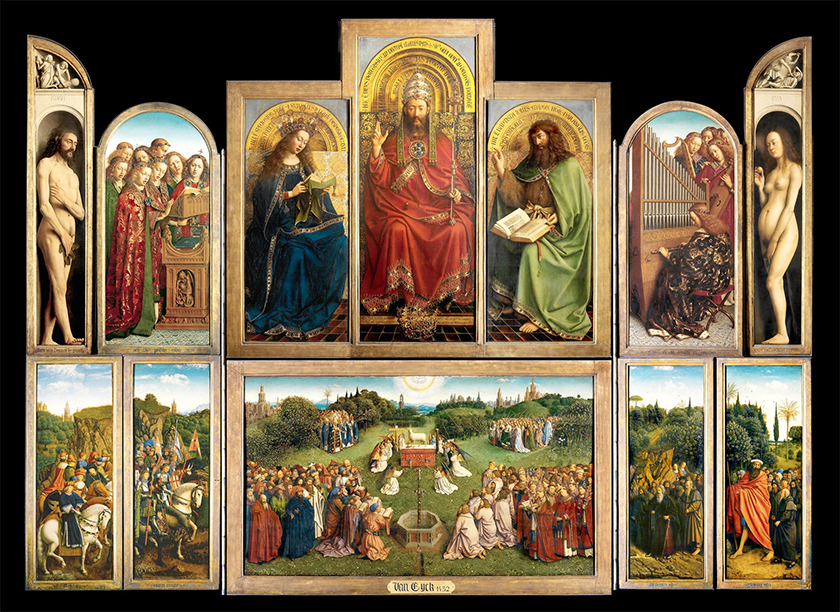
These interior wooden panels, featuring Adam and Eve and the iconic “The Adoration of the Mystic Lamb,”
Image courtesy of: The New York Times, photographed by: Hugo Maertens
Earlier this year, the $2.4 million restoration performed at the Ghent Museum for the “Adoration of the Mystic Lamb” altarpiece was unveiled. Sadly though, the result was far from ideal. Made in 1432, the altarpiece, also know as the Ghent Altarpiece, was painted by the Flemish artists Hubert and Jan van Eyck. The scene is painted across 12 panels which have been through many trials and tribulations over the past 588 years.
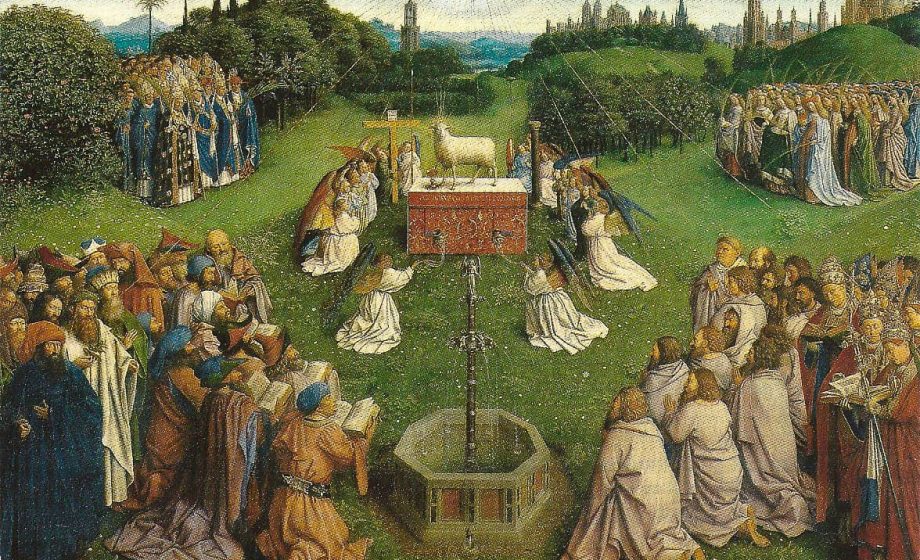
The painting prior to restoration.
Image courtesy of: Art Critique
Over the past four years, layers and layers of paint were physically removed from the wood panels. The result was amazing… for the first time in hundreds of years, the individual brush strokes were visible.
The Ghent Altarpiece is one of the earliest known art works to have used oil paints on a large scale. Today’s scanning techniques were able to uncover the singular skills of the Van Eyck brothers underneath layers of overpainting and varnish. Like most intricate restorations, this work lead to a number of discoveries including the dating of several of the wooden panels from the same oak trees. This early Renaissance piece is widely considered to be one of history’s most influential works because of the attention it pays to both earthly and divine beauty.
At the center of this polyptych altarpiece is the most iconic panel, “The Adoration of the Mystic Lamb.’’ This panel features a worship attended by different groups of people in a landscape that is rich in religious symbolism. In the middle is a white lamb displayed on an altar with a wound gushing blood.
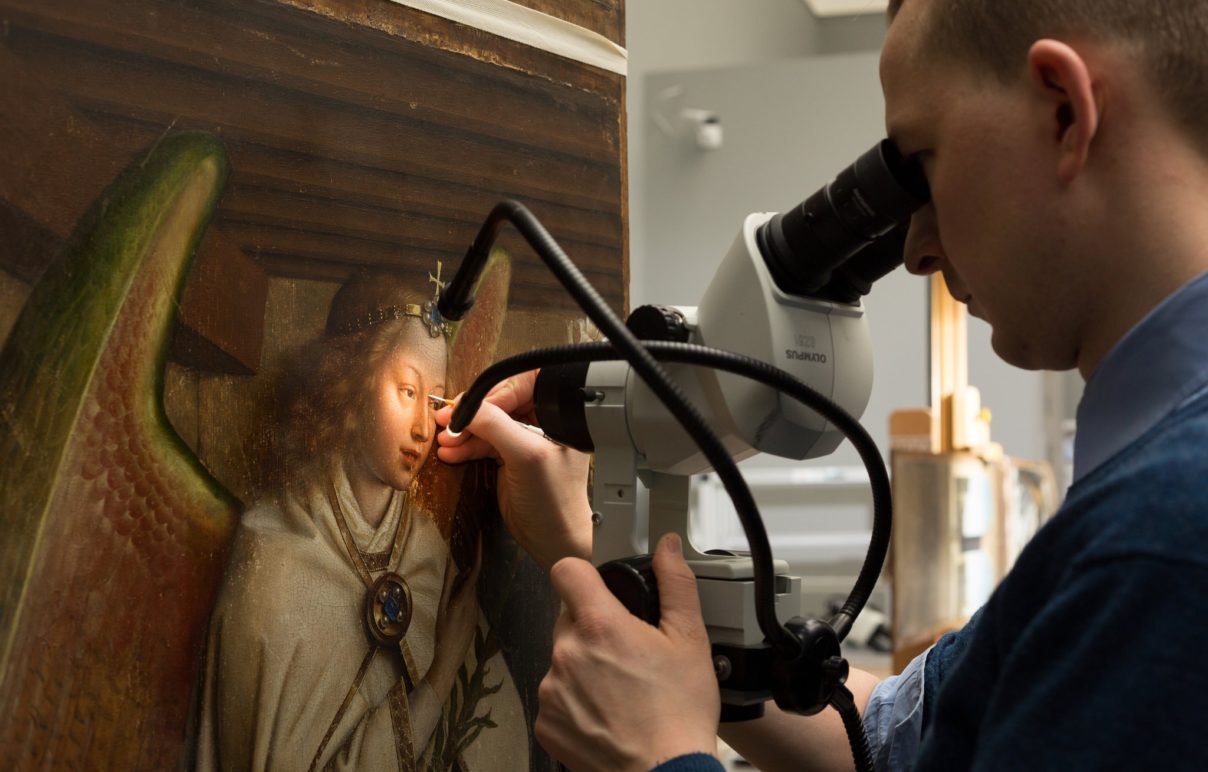
The image of Archangel Gabriel being “operated on” by a skilled restorer using a scalpel.
Image courtesy of: The New York Times, photographed by: Jean-Luc Elias
Initially, restorers did not have permission to remove all the varnish and overpainting that had been accumulated over the years. However, new scanning technology confirmed that what lay deep beneath the surface was amazing. In addition, it added to the certainty that this was painted by the Van Eyck brothers.
This new scanning technique has quickly become the gold standard for “investigating” historical paintings. Called macro-X-ray fluorescence analysis (MA-XRF), this is a revolution for conservation work. Geert Van der Snickt, a cultural heritage scientist at the University of Antwerp said, “Never before has such a large surface been scanned; the outside panels measure eight square meters in total.”
The first step calls for scientists to “blast” the painting with high-frequency electromagnetic waves which leads atoms inside the painting to ionize and emit electromagnetic waves of their own. Then, the scanner captures these secondary waves and identifies each different atom and its specific place in the painting. So revolutionary!
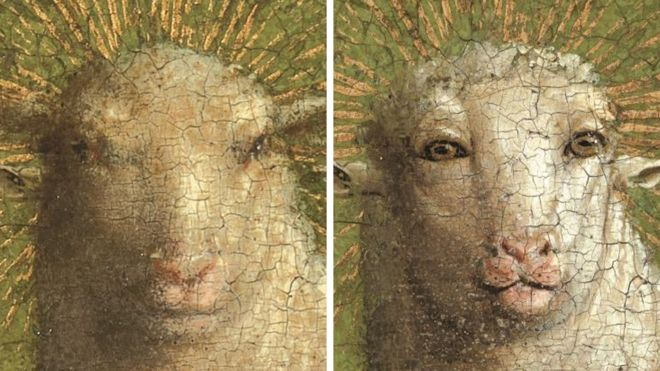
Before and after restoration…
Image courtesy of: BBC
The second phase of conservation allowed restorers to carefully study the lower five panels of the inner altarpiece paintings. This work, which began in 2017, found that the original 15th-century paintings had been painted over in the mid-1500s.
Thus, the lamb received a facelift… and what restorers found was shocking. The face of the lamb was actually not the face of an animal, it is a strangely human face with a strong nose and bulging eyes. Furthermore, the lamb’s strange facial expression is “alarmingly humanoid.”
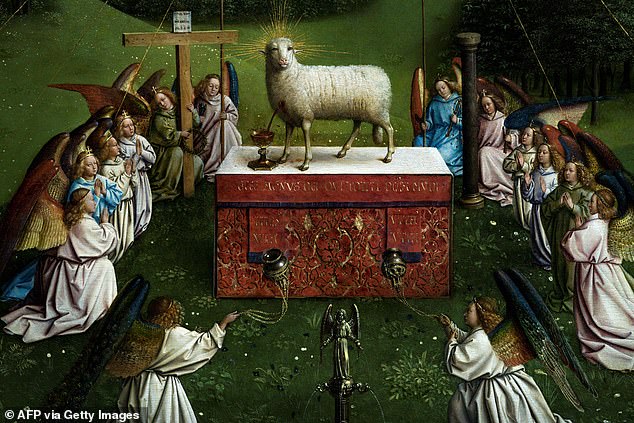
From December 2019, the restored original “Adoration of the Mystic Lamb.”
Image courtesy of: Daily Mail
Helene Dubois, head of restoration at the Ghent Museum, called the unveiled face “cartoonish”, “a shock for everyone.” The Ghent Museum further added, “There are no words to express the result.”
Koenraad Jonckheere, a professor of Renaissance and Baroque art at Ghent University, speculated that the overpainting was done to neutralize the “intense and humanized identification of the lamb into an expressionless animal”. That might be the case, and some argue that the altarpiece was better left alone. However, in reality, this painting isn’t singular in what might be found following an involved restoration. Over the past several years, restorers have discovered that in the 16th century, approximately 70% of original altarpiece panels were painted over and modified. Whatever the case, it is worth seeing for yourself if you happen to visit the beautiful city of Ghent!